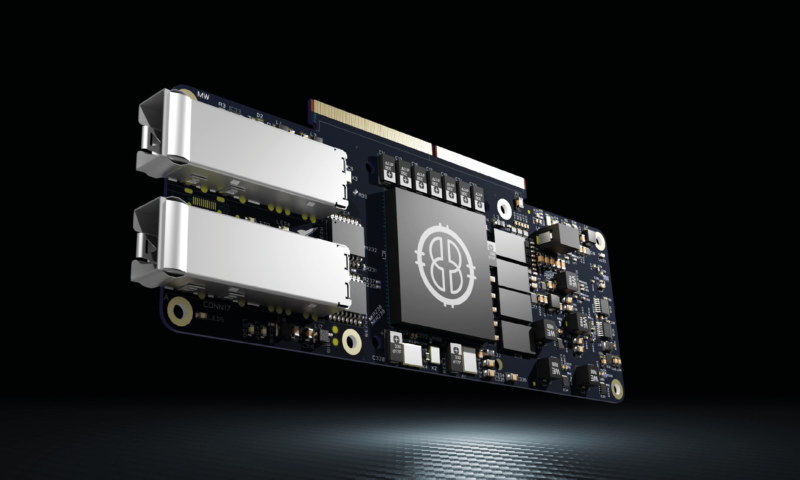
Brompton Technology, an industry leader in LED video processing for live events, film and television, has just announced the release of a revolutionary new receiver card, the Tessera G1, which is set to disrupt the LED industry with its ground-breaking capabilities. The G1 receiver card supports 10Gb fiber connections direct to the panel. It is also capable of supporting a staggering one million pixel capacity for a new generation of ultra-fine pixel pitch panels, or up to 1,000 fps (frames per second). All this is made possible by a monumental 20x increase in computing power compared to the existing top performer, the Tessera R2+ receiver card, making the G1 a game-changer for the industry.
This latest innovation is a major advance in the company’s mission to push the boundaries of what is possible with LED video processing technology. With the G1 receiver card, users can expect a whole new level of exceptionally realistic visual performance, making it a must-have for content creators in the future.
Cesar Caceres, Brompton’s Product Lead, emphasizes that the company’s Tessera R2+ receiver card is still optimally positioned to deliver exceptional performance for a vast majority of LED fixtures. In fact, thousands of projects worldwide will continue to use LED panels integrated with R2+ cards with great success. The G1 is the choice for next-generation panels.
“We are definitely not forsaking the R2+ card and all its impressive capabilities,” Caceres explains. “We are simply recognizing the rapid advancements of LED video technology. As a company, we are proactively positioning ourselves to meet and exceed the future demands of our industry.”
Already in talks with panel manufacturers, Brompton is working to integrate the new receiver card as the driving force behind the next generation of LED screens. Caceres notes that the benefits are not only about the substantial increase in pixels that can be processed thanks to the new card, but that it will also facilitate the integration of additional calibrated channels, which Brompton defines as RGBW, Red, Green, Blue, and Whatever.
“As with all our systems, we offer flexibility by keeping the possibilities open for the extra emitters. One of the most useful colors we anticipate panel manufacturers wanting to incorporate is white,” continues Caceres. “When the colors red, green, and blue are used to represent ‘white’, the light spectrum they produce may not always look natural and align with the viewer’s expectations. Adding a white channel provides an improved spectral output for the panels. And the G1 has the necessary power to cope with the complex algorithms necessary to maintain color-accurate calibration and control with extra emitters. Also, the only way to achieve color accuracy from panels with the new RGBW emitters is by calibrating them, and our unique Dynamic Calibration system was designed to enable this possibility.”
When it comes to in-camera visual effects, LED panels often contribute to lighting the scene, so having additional light emitters in the LED panel represents a significant leap in color-rendering accuracy on skin tones and foreground elements blending with virtual environments. “In future, if you want a panel that features an extra emitter, or one that boasts an ultra-fine pixel pitch, the G1 receiver card will be the ideal solution,” Caceres adds.
Another pioneering feature of the G1 receiver card is its capability to support a 10 gigabit connection, thus providing tenfold the bandwidth of the current R2+ card and positioning the G1 as a ‘future-proof’ solution.
“What Brompton has created with the G1 is not only poised to impact the live events and virtual production sectors, but it also has the power to influence other industries,” Caceres concludes. “For example, by adding a white emitter, it will be possible to create realistic lighting with a much more potent source. The ultra-fine pixel pitch panels the card is capable of supporting make it suitable for use in 360-degree simulators, or even research centers. The opportunities and applications are virtually limitless, and we are thrilled to be a part of driving the advancement of LED technology, which will lead to incredibly realistic visual experiences in the future.”
Further information from Brompton Technology: www.bromptontech.com


